Some people out there may confuse Taiwan with Thailand, however they are two very different countries. In fact, there are so many differences that we can’t even list them in this article. To help you differentiate between Taiwan and Thailand, we have laid out the key differences that you need to know here.
I have made Taiwan my permanent home for ten years, and Thailand is my favorite vacation spot in Asia which I have visited multiple times (you can check out our blog of Thailand here). Therefore I feel I am qualified to voice my opinion on this issue.
To put it simply, Taiwan and Thailand are similar because they both start with the sound “tie” and that is about where the similarities end. Unfortunately, endless mail is sent to the wrong place each year. I hope the information below can help people to stop mixing these countries up.
Location
Taiwan is located in East Asia, straddling the Tropic of Cancer. It is positioned to the east of China, with Japan and Korea lying to its north, and the Philippines situated to its south. Taiwan’s strategic location in the Western Pacific makes it a significant hub in the region, offering a blend of tropical and subtropical climates.
In contrast, Thailand is situated in the heart of Southeast Asia, just below the Tropic of Cancer. It shares its borders with several countries: to the west and northwest is Myanmar, to the south lies Malaysia, and to the east are Laos and Cambodia. Thailand’s central location in Southeast Asia makes it a crossroads of diverse cultures and influences, with a fully tropical climate and rich biodiversity.
Size

As you can see in the photo above, Taiwan is much smaller than Thailand and fits snugly inside it. The land area of Thailand is 513,120 km2 while the area of Taiwan is only 36,197 km2.
Shape
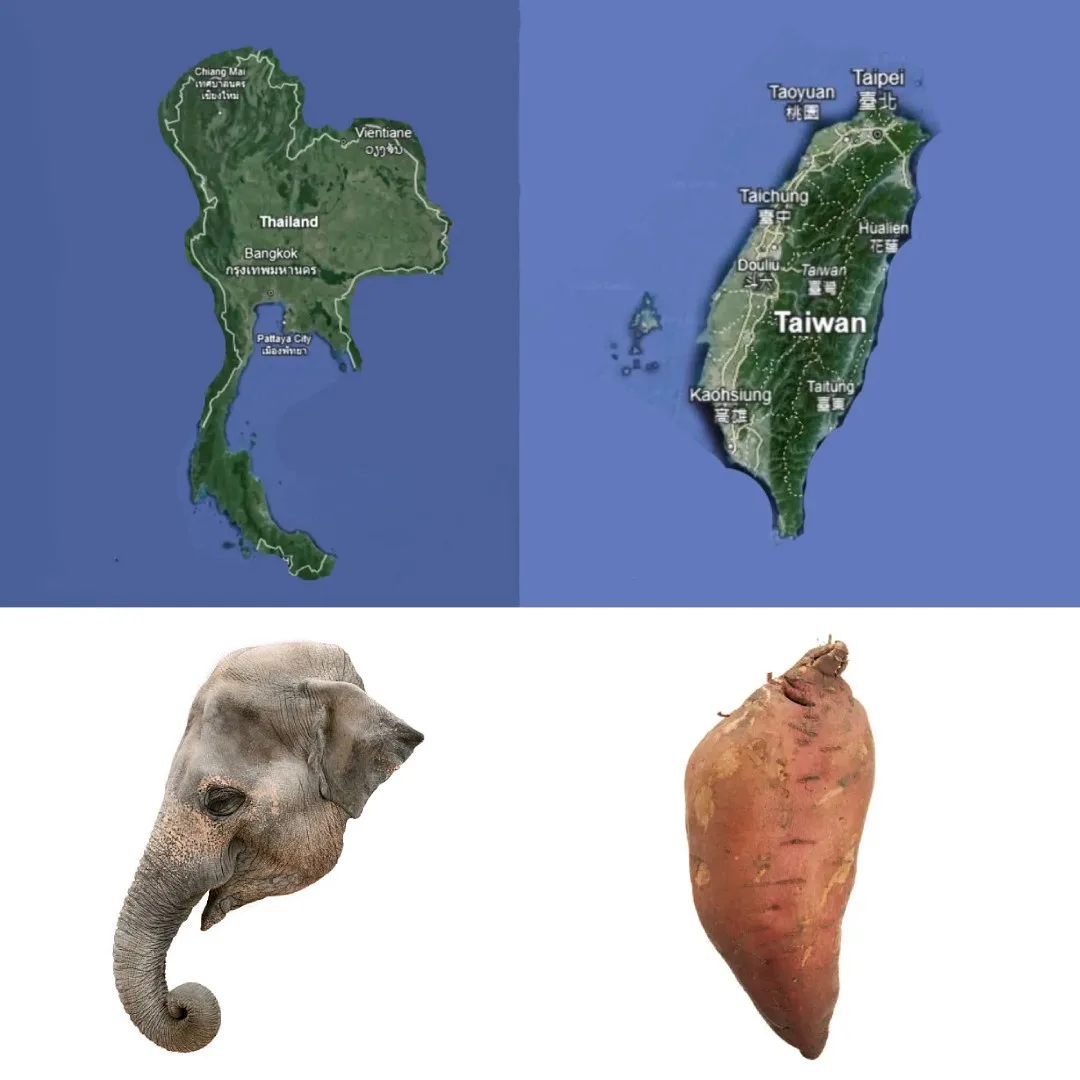
Many people say that Taiwan is an island shaped like a sweet potato, while Thailand is shaped like an elephant head. I think these are two good ways of remembering the shape of each country, because Elephants are native to Thailand, and sweet potatoes are one of Taiwan’s most popular agricultural products.
Population

Thailand has 69 million people while Taiwan only has 23 million. The greater portion of Thailand’s population is located around Bangkok, while Taiwan’s largest urban population is located around Taipei. However, because Taiwan is much smaller than Thailand, Taiwan’s population density is 650 people per km2, while Thailand’s is only 132 people per km2. Therefore, while Thailand has more people than Taiwan, Taiwanese people are much more densely packed onto their small islands.
Language

In Thailand, they mainly speak Thai, while in Taiwan, they speak mostly speak Mandarin Chinese. However, in Taiwan, many people speak Taiwanese (Hokkien), Hakka, or Austronesian languages. Thailand also has over 62 officially recognized languages. While most people can speak Thai, people also speak Khmer, Malay, Karen, Lao, Chinese, and Miao languages.
Religion

The main religion in Thailand is Theravada Buddhist, with over 90% of people identifying as Buddhist.
In Taiwan, the main religion is mostly a mix of Taoism and Buddhism, also known as Taiwan folk religion, making up nearly 70% of the population.
The temples in both countries are quite different, reflecting distinct cultural and religious traditions. Thai temples, known as “wats,” are often characterized by their intricate architecture and serene environments. They tend to be more conservative in their design, featuring ornate decorations, golden spires, and detailed murals depicting Buddhist teachings. These temples are usually set apart from the bustling city life, offering a peaceful retreat for meditation and reflection.
In contrast, temples in Taiwan, often referred to as “miao 廟,” serve as vibrant communal gathering places. They typically house many different gods under one roof, reflecting the syncretic nature of Taiwanese religious practices, which blend Buddhism, Taoism, and folk beliefs. These temples are lively centers of community activity, filled with worshippers, incense, and colorful decorations.
Another difference is you must take off shoes in temples in Thailand, like in Japan and Korea, while this is not necessary in most temples in Taiwan.
Both Thai and Taiwanese temples are great places to visit for religious travelers, offering unique insights into the spiritual life and cultural heritage of each country. Whether you seek the tranquility of a secluded Thai wat or the bustling atmosphere of a Taiwanese miao, both provide enriching experiences and opportunities for spiritual exploration.
Culture
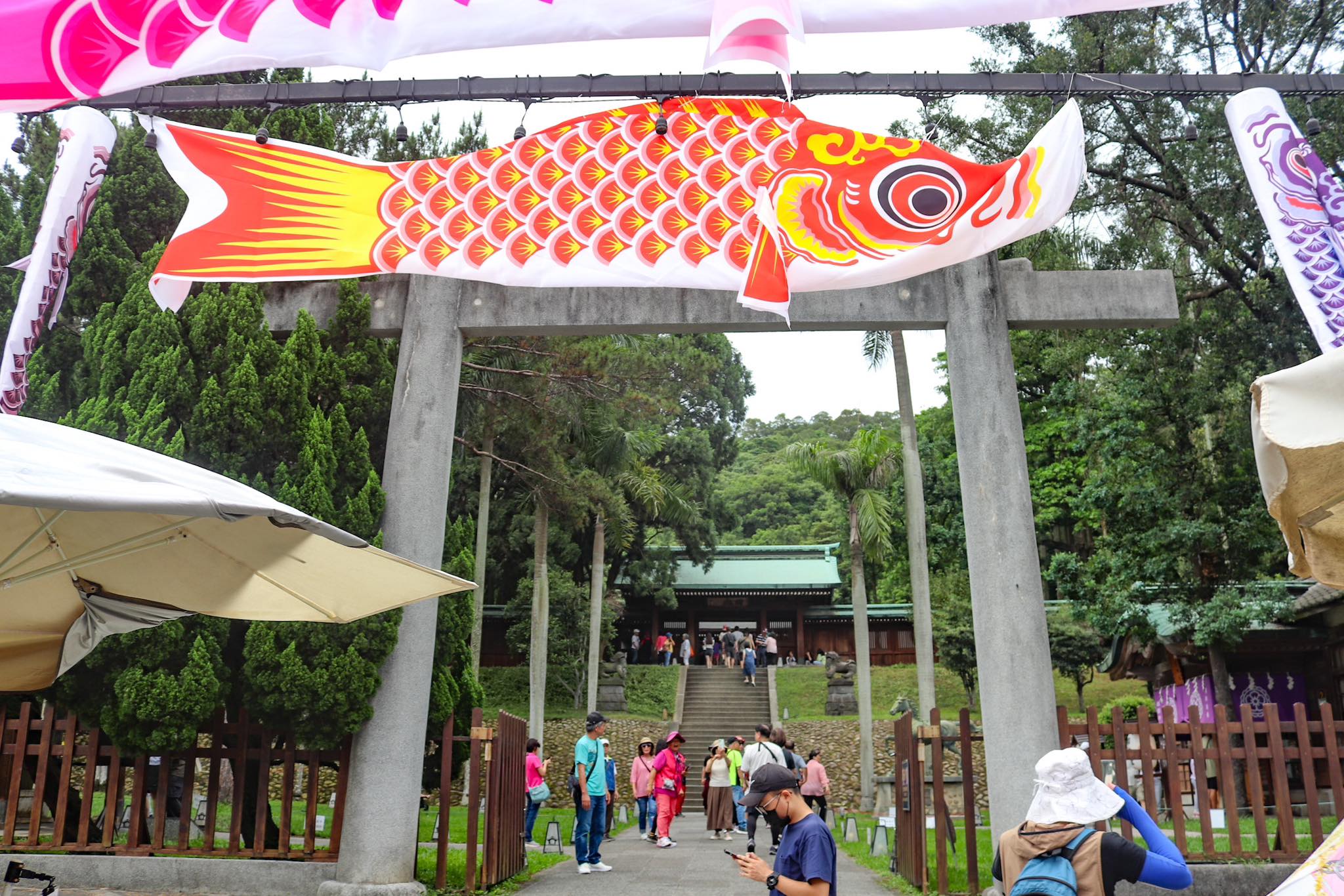
Thai Culture:
Thai culture is deeply influenced by Buddhism, which is the predominant religion in the country. The teachings of Buddhism permeate daily life and societal norms, emphasizing values such as respect for elders, mindfulness, and compassion. This spiritual foundation is evident in the numerous temples, festivals, and rituals that are an integral part of Thai life. Additionally, animism plays a significant role in Thai culture, with a widespread belief in spirits and the practice of spirit worship. This belief system is often intertwined with Buddhist practices, evident in the presence of spirit houses outside homes and businesses, where offerings are made to appease local spirits.
The influence of neighboring cultures such as India, China, and Japan is also prominent in Thailand. From India, Thailand has adopted various aspects of Hinduism, seen in the reverence for Hindu deities like Brahma and Ganesh, as well as in classical dance and literature. Chinese cultural influence is visible in the vibrant Chinatown districts, the celebration of Chinese festivals like Lunar New Year, and in culinary practices. Japanese cultural elements have been embraced more recently, with Japanese cuisine, fashion, and entertainment becoming increasingly popular.
Furthermore, the Thai monarchy has historically played a crucial role in shaping the nation’s culture. The reverence for the king and the royal family is deeply ingrained in Thai society, with the monarchy symbolizing national unity and continuity. Royal ceremonies, traditional Thai art, and architecture are all influenced by the monarchy.
Taiwanese Culture:
Taiwan has a complex and diverse cultural history, shaped by various waves of colonization and the presence of indigenous peoples. The island was first colonized by the Dutch in the 17th century, followed by the arrival of Chinese settlers, primarily from Fujian and Guangdong provinces. This influx of Han Chinese immigrants brought with it the rich cultural traditions of southern China, including language, cuisine, and religious practices.
In the late 19th and early 20th centuries, Taiwan was colonized by Japan, which left a lasting impact on the island’s infrastructure, education system, and cultural life. Japanese influence is still evident today in Taiwanese cuisine, fashion, and architecture. The period of Japanese rule also brought modernization and industrialization to Taiwan, shaping its development into a modern economy.
In addition to the colonial influences, Taiwan is home to several indigenous groups, collectively referred to as the Aboriginal peoples. These indigenous communities have distinct languages, customs, and traditions that contribute to Taiwan’s cultural diversity. Efforts to preserve and promote Indigenous culture are evident in festivals, museums, and cultural centers dedicated to Aboriginal heritage.
Among the Han Chinese population, there are significant groups of Hakka people, known for their unique language, customs, and traditional architecture. The Hakka community has made substantial contributions to Taiwanese culture, particularly in the areas of music, cuisine, and folklore.
Festivals

Taiwan celebrates traditional Chinese Festivals such as New Year’s, Lunar New Year, Lantern Festival, Tomb Sweeping Day, Dragon Boat Festival, Mid-Autumn Festival, as well as the Double Ten Day or National Day of the Republic of China.
Thailand also celebrates New Year, as well as other festivals Loy Krathong National Elephant Day, Makha Bucha Day, Chakri Day, Songkran Day, Visakha Bucha Day, Asahna Bucha Day, Chulalongkorn Day, and Constitution Day.
The number of festivals for both of these countries is actually endless, with many more festivals that are not celebrated as national holidays, such as the Xinshe Flower Festival in Taichung pictured above.
Economy

Taiwan’s economy overall is more robust than Thailand’s. Thailand’s GDP per capita was USD $7,812 (nominal 2024 est) or $23,401 PPP in 2024, while Taiwan’s GDP per capita was USD $35,129 (nominal 2024 est) or USD $77,894 (PPP; 2024). Total GDP was 791 billion for Taiwan while only 548 billion for Thailand, which is saying a lot since Thailand also has about three times the population of Taiwan.
However, when it comes to the cost of living, Thailand wins because the cost of housing and hotels is cheaper than Taiwan. Taiwan has a major real estate bubble, and many people choose to park their investments there, which has made housing prices skyrocket. Also, the average purchasing power in Thailand is lower, meaning many everyday items will be cheaper.
Currency

Thailand’s currency is the Thai baht while Taiwan uses the New Taiwan Dollar. The Thai Baht and the New Taiwan Dollar are actually worth about the same. However, you will be able to buy more things for better quality in Thailand than in Taiwan. Because the cost of living and wages are less in Thailand, everyday items are going to be a bit cheaper in Thailand.
Taxation

Taxation varies in Taiwan and Thailand, and can either be more or less depending on your income level and the type of income you are making.
Personal Income Tax
When it comes to personal income tax, Thailand’s tax rate is a bit higher for those with lower incomes, however, for high-income earners, Taiwan’s top income tax rate is 40%, while Thailand’s is only 35%.
For more information, you can check out our Thailand tax guide here or our Taiwan tax guide here.
Corporate Tax
The corporate tax rate in both Taiwan and Thailand is 20%. However, the VAT rate in Taiwan is only 5%, while the VAT rate in Thailand is 7% with the possibility of rising to 10%.
Immigration

Visitor Visas
For both Taiwan and Thailand, 30 to 90-day visa entry is available for most European countries, Australia, the US, and Canada. Taiwan offers 90 day visa travel for most of these countries, but Thailand usually only offers 60 days (until very recently, it was only 30 days). Therefore, please double check before your departure to see if you need a visitor visa from your country, and check how many days the visa is valid.
Resident Visas
For both Taiwan and Thailand, resident visas are only available for employees, investors, students, missionaries, or spouses of Taiwanese/Thai nationals. These visas last a few years at a time but are not permanent. Check here for our Taiwan immigration guide.
Digital Nomad Visas
Taiwan offers a Digital Nomad Visa called the employment gold card. This offers foreigners some tax benefits, provides an open work permit, lets them join Taiwan’s National Health Insurance, and allows them to become a permanent resident faster. Check out our full employment gold card guide here.
However, Thailand does not offer a digital nomad visa but simply allows digital nomads to come to work in Thailand on a visitor visa or other visa type.
Permanent Residency
To become a permanent resident in Thailand, you must have lived or worked in Thailand for at least three years, while Taiwan requires five consecutive years of living in the country for each permanent resident. Check out our Taiwan permanent residency guide here.
Retirement Visas
Thailand offers retirement visas for one year at a time. There is no retirement visa for Taiwan.
Geography

Both Taiwan and Thailand offer diverse and captivating landscapes, with Taiwan’s dramatic mountain scenery contrasting with Thailand’s mix of fertile plains and northern highlands. This geographical diversity means there is amazing natural beauty and outdoor activities available in each country.
Taiwan’s Geography
Two-thirds of Taiwan is covered in mountains, making it one of the most mountainous islands in the world. The island’s central and eastern regions are dominated by five main mountain ranges, with peaks that soar above 3,000 meters (9,800 feet). The tallest peak, Yushan (Jade Mountain), reaches an impressive height of 3,952 meters (12,966 feet), making it the highest point in Northeast Asia. These rugged mountains are not only a dramatic feature of Taiwan’s landscape but also a haven for biodiversity, home to numerous endemic species and lush forests. The mountainous terrain significantly influences the island’s weather patterns and water resources, contributing to its scenic beauty and outdoor recreational opportunities, such as hiking, mountain climbing, and nature exploration.
Thailand’s Geography
In contrast, Thailand’s geography is more varied but less mountainous. The country is characterized by a broad central plain, which is the fertile heartland where much of Thailand’s rice cultivation takes place. This vast plain is known as the Chao Phraya River Basin, and it supports dense agricultural activity and bustling cities. Northern Thailand, however, features a mountainous region that includes the Thanon Thong Chai Range, home to Doi Inthanon, the country’s highest peak at 2,565 meters (8,415 feet). These northern mountains are part of the larger Shan Hills system and are known for their cooler climate, dense forests, and ethnic diversity, including various hill tribes with distinct cultures and traditions. The eastern part of the country features the Khorat Plateau, while the southern peninsula extends into the Malay Peninsula, characterized by hilly terrains and coastal plains.
Climate

Thailand has a tropical climate with warm temperatures year-round, characterized by three main seasons: a hot and humid summer, a rainy monsoon season, and a cooler, dry winter.
In contrast, Taiwan has a subtropical climate with four distinct seasons. Summers in Taiwan are hot and humid, often accompanied by typhoons and heavy rains, while winters are mild, especially in the south.
Both countries experience significant rainfall, but Thailand’s rainfall is primarily concentrated in the monsoon season, whereas Taiwan’s summer months are marked by typhoons. Overall, Thailand tends to be warmer and more consistently hot, while Taiwan has more seasonal variation and a higher likelihood of severe weather during the summer.
Air Pollution
When it comes to air pollution, Taiwan has much better air quality overall when compared to Thailand. The air quality in Bangkok can be especially bad, whereas in Taipei usually there is decent air quality.
Travel and Tourism

Thailand has way more tourists than Taiwan. Before the pandemic, in 2019 Taiwan had about 11.8 million foreign visitors while Thailand had about 40 million visitors in 2019.
If you want to escape tourists, Taiwan is the place to go. Taiwan is relatively unknown and undiscovered compared with Thailand. This is because it is often downplayed by China, and it has a lackluster tourism promotion board. Taiwan does not rely on foreign tourism for a major part of its economy like Thailand. Most tourist spots are mostly visited by locals.
What’s the Difference Between Taiwan and Thailand for Traveling?
When traveling between Taiwan and Thailand, several differences become apparent. In general, hotels in Thailand tend to be more affordable compared to those in Taiwan. Thailand offers a wide range of accommodation options, from budget hostels to luxurious resorts, often at lower prices due to the country’s lower cost of living. This affordability makes Thailand an attractive destination for budget-conscious travelers seeking value for their money.
On the other hand, Taiwan provides a greater variety of transport options, which contributes to its overall convenience for travelers. The island’s efficient and extensive public transportation network includes the Taipei MRT (Mass Rapid Transit), a comprehensive bus system, and high-speed rail services that connect major cities and regions. Additionally, Taiwan’s well-maintained infrastructure and reliable public transit make it easier for travelers to navigate the country with ease.
While Thailand’s lower hotel prices offer cost savings, Taiwan’s advanced and accessible transportation system enhances the convenience of travel. This combination of affordability in Thailand and convenience in Taiwan can influence a traveler’s choice based on their priorities, whether they are looking for budget-friendly accommodation or efficient and hassle-free travel around the destination.
What are Thailand and Taiwan famous for?
Thailand is renowned for its stunning beaches, which are among the most picturesque and popular in the world. Destinations like Phuket, Krabi, and the Phi Phi Islands offer crystal-clear waters, golden sands, and vibrant marine life, making them ideal spots for relaxation and water activities. The country is also famous for its majestic royal palaces, particularly the Grand Palace in Bangkok, an architectural marvel and historic site that exemplifies Thai opulence and artistry. Buddhist temples are another hallmark of Thailand, with iconic sites such as Wat Arun and Wat Phra Kaew showcasing intricate designs and spiritual significance. The Chao Phraya River, flowing through Bangkok, is central to the city’s life and culture, providing scenic views and serving as a major transportation route. This river is lined with historical landmarks, bustling markets, and floating restaurants, adding to Thailand’s rich cultural tapestry.
Taiwan is celebrated for several prominent features and landmarks. Taipei 101, once the tallest building in the world, is a symbol of Taiwan’s modernity and economic progress, offering stunning views from its observation deck and featuring a unique architectural design. The island’s geological features, including its volcanic landscapes and hot springs, are notable, with landmarks like Yangmingshan National Park highlighting the country’s diverse natural beauty. Taroko Gorge, a dramatic marble canyon in eastern Taiwan, is renowned for its breathtaking scenery and hiking trails, making it a popular destination for nature enthusiasts. Sun Moon Lake, located in central Taiwan, is known for its serene waters and picturesque surroundings, providing opportunities for boating and scenic walks. Alishan, a famous mountain range, is celebrated for its stunning sunrise views, lush forests, and tea plantations, offering a refreshing escape into nature.
Thai vs. Taiwanese Cuisine
Thai cuisine is celebrated for its spicy and multifaceted flavors with a preference for long-grain rice, while Taiwanese cuisine offers a sweeter, milder palate with a focus on sticky rice and dishes influenced by Chinese and Japanese culinary traditions. Both cuisines provide rich and varied dining experiences that reflect their distinct cultural backgrounds and regional influences.
Thai Cuisine
Thai cuisine is renowned for its bold and vibrant flavors, often characterized by its spicy and aromatic profile. Spiciness is a hallmark of many Thai dishes, achieved through the use of ingredients like fresh chilies, chili paste, and hot sauces. Additionally, Thai cuisine frequently incorporates a balance of flavors, including bitter, sour, sweet, and salty, creating a complex and harmonious taste experience. Long-grain rice is commonly used in Thai meals due to its fluffy texture and ability to complement a wide range of dishes. Popular Thai dishes include pad Thai, a stir-fried noodle dish with a tangy tamarind sauce; various curries, which can range from the fiery green curry to the rich and creamy red curry; and mango sticky rice, a dessert featuring sweet mango paired with coconut-infused sticky rice.
Taiwanese Cuisine
In contrast, Taiwanese cuisine exhibits a subtler and often sweeter flavor profile, reflecting the influences of Chinese and Japanese culinary traditions. Taiwanese food tends to avoid the intense spiciness found in Thai dishes, instead focusing on sweetness and savory flavors. Short-grain sticky rice is preferred in Taiwanese cuisine for its glutinous texture, which works well in both savory and sweet dishes. Taiwanese food is known for its unique offerings, such as stinky tofu, a fermented tofu dish with a strong aroma that is beloved by many; beef noodle soup, a hearty and flavorful dish featuring tender beef and savory broth; and fried chicken, which is often seasoned and crispy. Bento boxes, or lunch boxes, reflect the Japanese influence and are popular for their convenient and well-balanced meals. Other notable Taiwanese foods include braised pork rice, a comforting dish with tender pork belly served over rice, and a variety of street foods that showcase the island’s diverse culinary heritage.
Hotels and Accommodation

In my own experience, I have got the feeling that hotels are cheaper in Thailand than in Taiwan, especially for a traveler like me who likes to book cheap hotels with good quality for the money, but nothing too fancy. Because of this, in general, Thailand wins as the budget tourist destination in my experience. Also comparing similar hotels within my budget (less than 100 USD per night) I have found the price of accommodation is usually going to be higher in Taiwan, especially in large cities. However, this is just my opinion and I am usually looking for low-cost, good-quality hotels which appear to be more plentiful in Thailand.
Statistically speaking though, the prices of hotels in both countries are very similar and the prices of hotels in Thailand have actually become a little bit higher. According to current data, the average hotel price in Taiwan currently is NT 3,135 (96 USD dollars), while the average hotel rate in Thailand is THB 4,007 (USD 109). Comparison of hotels all depends on what range and quality you are looking for.
In the end, it is best to compare current prices online yourself.
Car and Scooter Rentals
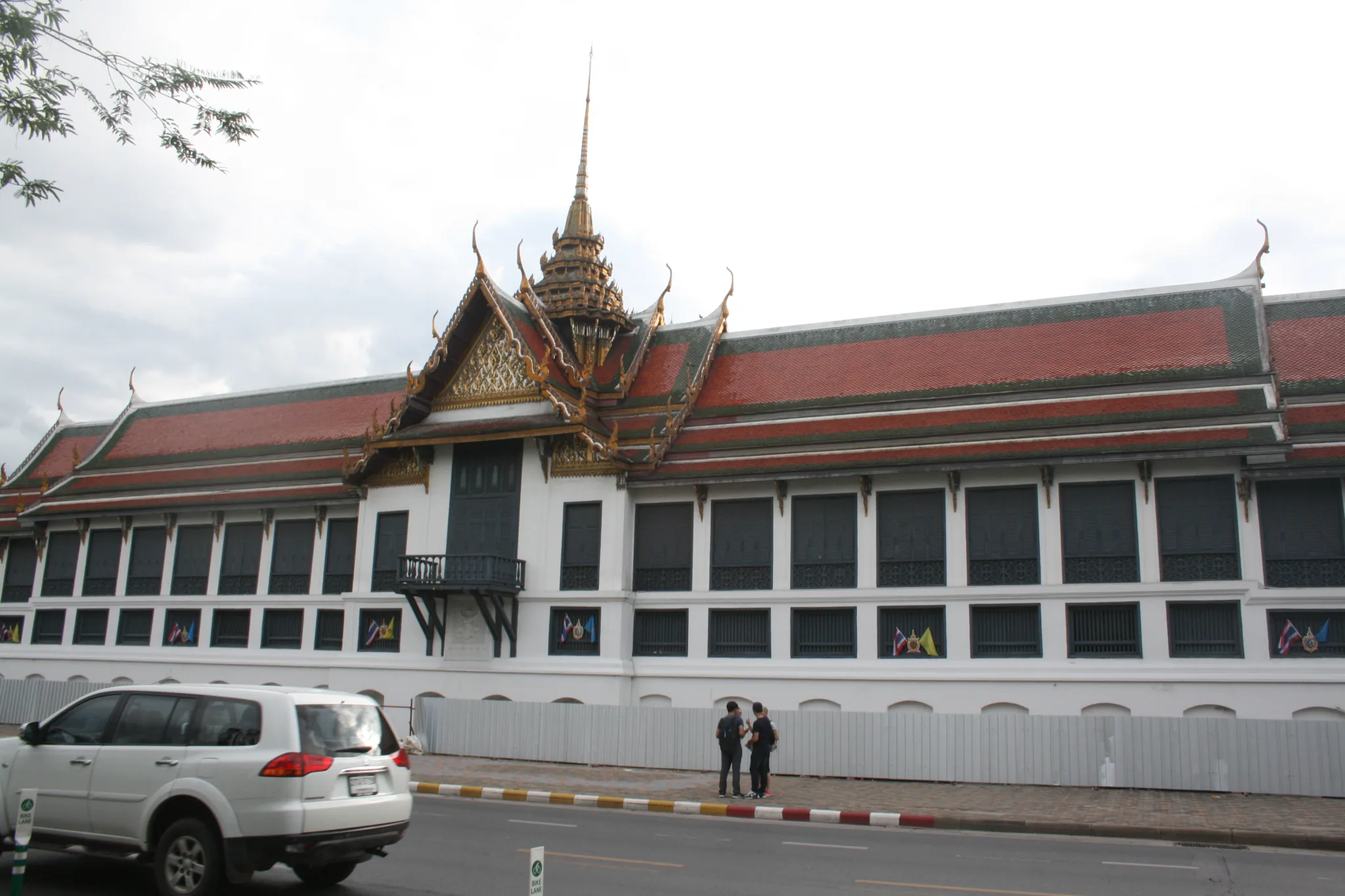
Cars drive on the left side of the road in Thailand, while cars drive on the right side of the road in Taiwan. This can be a positive or negative depending on what you are used to. In both countries, I have found it easy to rent a car or scooter, and both countries only require an international driver’s permit.
Overall after driving in both countries, I feel that Taiwan’s roads are safer, better developed, have better traffic control, and better traffic enforcement than Thailand’s.
I won’t go into further detail, but you can check out our Taiwan car rental guide here, and our Thailand car rental guide here.
You can also check out our Taiwan scooter rental guide here.
Public Transportation

When it comes to public transportation, Taiwan wins. Taiwan’s capital Taipei has a much better light rail (MRT) network than Bangkok. Ridership of Bangkok’s mass transit lines is about 1 million people daily, while in Taiwan daily ridership is over 8 million. In addition, there are fewer traffic-jams in Taiwan which has more freeway systems. Taiwan also has a High-Speed Rail network that runs from north to south, as well as a dependable TRC train that encircles the island. For more information, check out our Taiwan transportation guide here.
In Thailand, low-price Tuk-tuk taxis are popular in cities, while in Taiwan no such service is available, but normal car taxis are plentiful.
Overall, it is easy to get where you need to go in both countries, but in Taiwan, it is a little more convenient.
Hiking

Taiwan wins when it comes to hiking; as mentioned before, there are more mountains in Taiwan. Also, there are many well-developed hiking trails around Taiwan’s major cities, and Taiwan has the highest peak in East Asia. All of Taiwan’s highest 100 peaks are also easily accessible for enthusiasts, however, permits and booking in advance may be necessary.
In Thailand, national parks are highly regulated, and foreigners can be charged high fees for entrance. Also, more and more often guides are required, meaning it can be more difficult and complicated to enjoy hiking in Thailand compared to Taiwan.
Cycling

Taiwan is known as the bicycle kingdom. Not only is it a manufacturer of bikes, but it is also a great place for riding. Cycling around the island is a popular pastime. Also, they drive on the right side of the road in Taiwan. Taiwan also has a cooler climate in the winter months which is better for cycling outdoors.
Thailand also has many good cycling routes along the coast in the south, or in the hills to the north. Traffic is a little crazier and less safe in Thailand, and roads are not as well-kept. However, it is hot year-round in Thailand which means there is no way to enjoy cool weather while riding like in Taiwan. You can check out our Taiwan cycling guide here.
Beaches

Thailand is renowned for its exceptional beaches and extensive coastline, which spans approximately 3,200 kilometers (about 2,000 miles). The country’s tropical climate ensures warm weather year-round, making it an ideal destination for beach lovers and water enthusiasts. Thailand’s coastline features a diverse range of stunning beaches, from the bustling sands of Pattaya and Phuket to the tranquil shores of Koh Samui and the Phi Phi Islands. The warm, crystal-clear waters and picturesque settings are perfect for sunbathing, swimming, and enjoying various water sports.
In contrast, Taiwan, while offering excellent snorkeling, scuba diving, and surfing opportunities, experiences more seasonal variations in its coastal activities. Taiwan’s coastline, which stretches for about 1,200 kilometers (750 miles), includes beautiful spots like Kenting National Park, renowned for its vibrant marine life and coral reefs. The warm waters around Taiwan do provide good conditions for snorkeling and diving, especially in locations such as Orchid Island and Green Island. Surfing is also popular along Taiwan’s eastern coast, with areas like Taitung and Yilan offering decent waves. You can also check out our list of best beaches around Taipei here. However, the best conditions for these activities can be highly seasonal, influenced by factors such as weather patterns, sea temperatures, and monsoon seasons which can make it too cold to enjoy water sports.
Having tried out beaches in both Taiwan and Thailand, I would say that overall Thailand wins when it comes to beaches.
Politics

Thailand is a constitutional monarchy where the king is the head of state, but his powers are largely symbolic and ceremonial due to the country’s constitution. The monarchy plays a significant cultural and historical role in Thailand, and the king is deeply revered by the Thai people. The political system operates under a framework where the king’s role is defined by a constitution that outlines the separation of powers between the monarchy, the executive branch, and the legislative body. Despite the monarchy’s symbolic nature, it remains a central figure in national identity and tradition.
Taiwan, on the other hand, operates as a free democracy with a political system characterized by regular, competitive elections and a high degree of political freedom. Taiwan’s democratic framework allows for significant public participation in the political process through voting and representation in its legislature. The president is both the head of state and government, and the political system is supported by a robust system of checks and balances among the executive, legislative, and judicial branches. You can check out our full Taiwan politics FAQ here.
In terms of global freedom rankings, Taiwan is ranked 27th on the World Freedom Index, reflecting its high level of personal and political freedoms, including freedom of speech, press, and assembly. This ranking highlights Taiwan’s strong democratic institutions and civil liberties. Conversely, Thailand is ranked 87th on the same index, indicating more significant constraints on political freedom and civil rights. Factors contributing to Thailand’s lower ranking include limitations on political expression, media freedom, and occasional political instability, which contrast with Taiwan’s more open and participatory democratic environment.
Gay marriage

Taiwan made history in 2017 as the first country in Asia to legalize same-sex marriage, marking a significant milestone in the region’s LGBTQ+ rights movement. This groundbreaking move was a testament to Taiwan’s progressive stance on equality and human rights.
On March 27th, 2024 Thailand also legalized same-sex marriage, reflecting a broader trend of advancing LGBTQ+ rights across Asia. This development signifies a growing acceptance and recognition of same-sex relationships in the region, following Taiwan’s pioneering example.
Marijuana

Thailand became the first country in Asia to legalize marijuana in 2022, reflecting the country’s progressive shift towards drug policy reform and its embrace of medical cannabis. This change allows for the regulated use of marijuana for medical purposes, however much of the trade still remains unregulated.
In contrast, in Taiwan marijuana remains illegal and is classified as a controlled substance with strict penalties for possession and use. This difference highlights the varying approaches to drug policy in the two countries, with Thailand leading the way in Southeast Asia on this issue while Taiwan maintains more restrictive regulations.
Capital Cities: Taipei & Bangkok
Bangkok is a much larger city compared to Taipei, both in terms of geographical size and population. As the capital of Thailand, Bangkok is a sprawling metropolis known for its vibrant street life, extensive neighborhoods, and a high density of people. In contrast, Taipei, the capital of Taiwan, is smaller in comparison but is renowned for its highly efficient and well-organized transportation system. Taipei’s public transport network includes a comprehensive MRT (Mass Rapid Transit) system, buses, and bike-sharing programs, making it easy to navigate the city quickly and conveniently. Despite Bangkok’s larger size, Taipei’s superior transportation infrastructure provides a smoother and more accessible commuting experience for residents and visitors alike.
Thanks for reading! Did we miss any differences? Let us know in the comments.

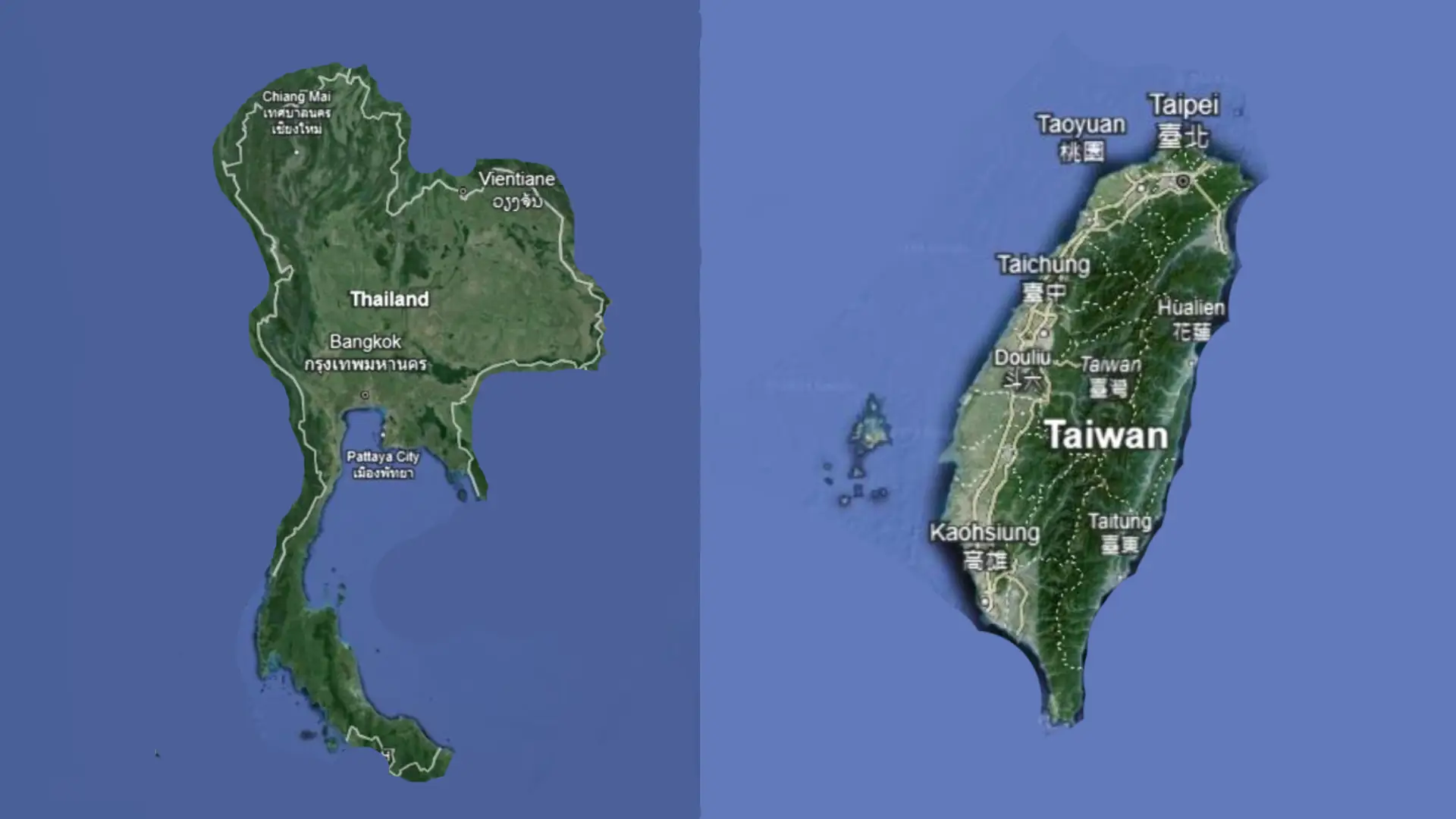




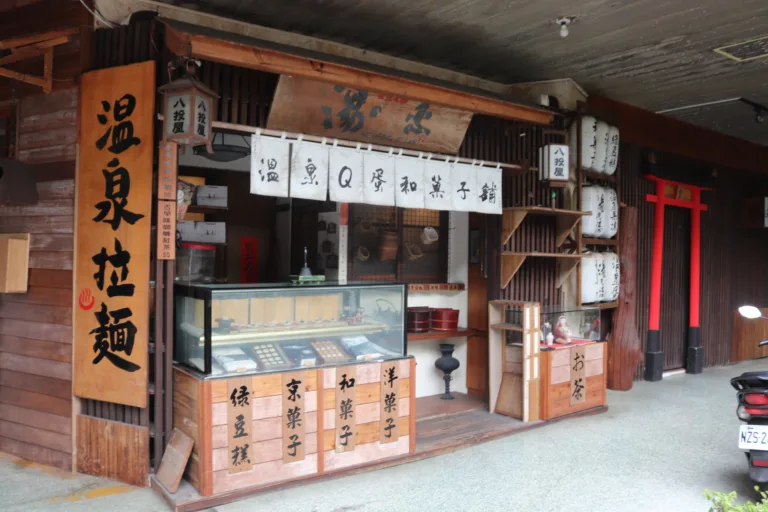




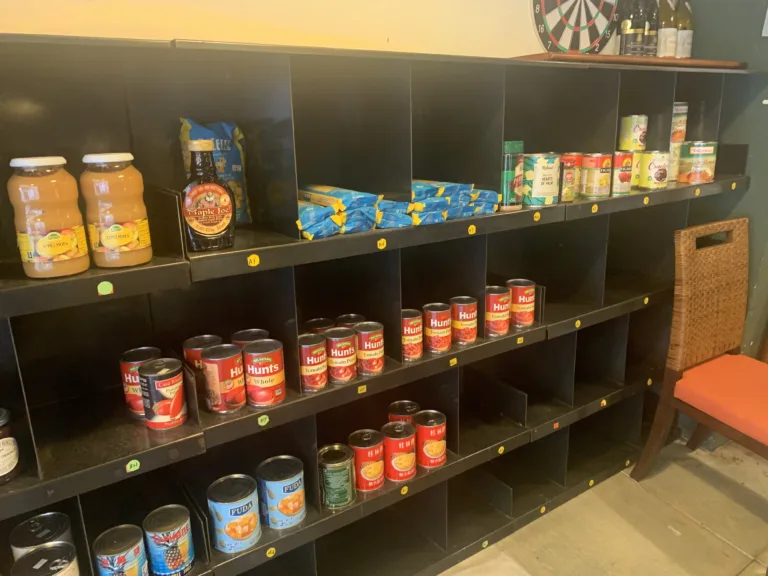
Very nicely explained in detail for both Taiwan & Thailand. Would like to visit both these countries in the future…
Great job explaining! I lived in Taiwan for 20 years between 1977-2000. I’ve been back a few times for short visits since. I, too, enjoyed Thailand as a favorite place to vacation, but haven’t been there since 2003. When I share with people where I lived earlier in my life, about half of them hear “Thailand.”